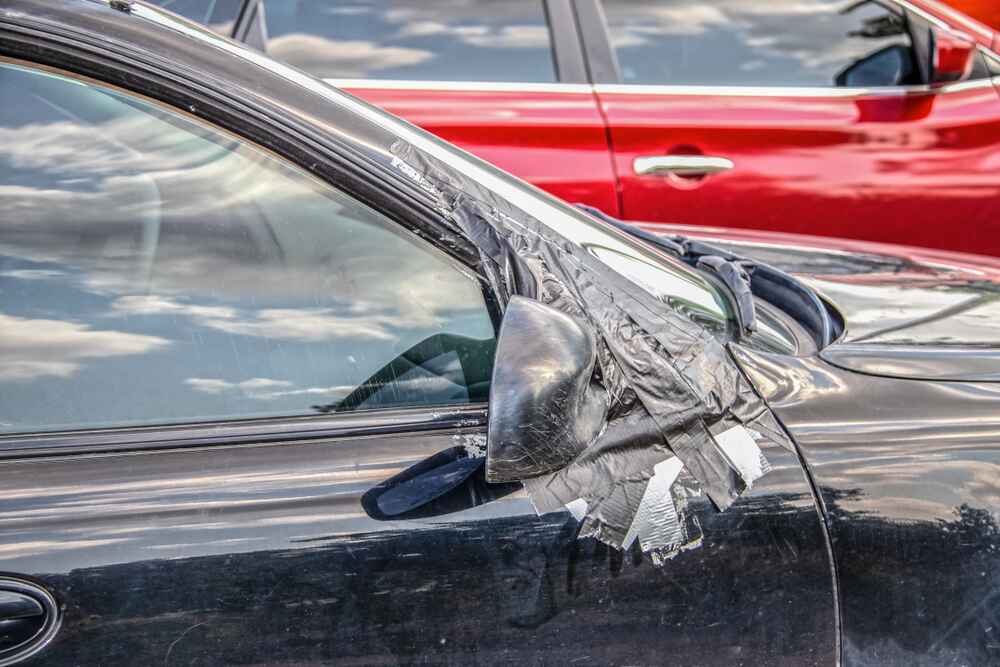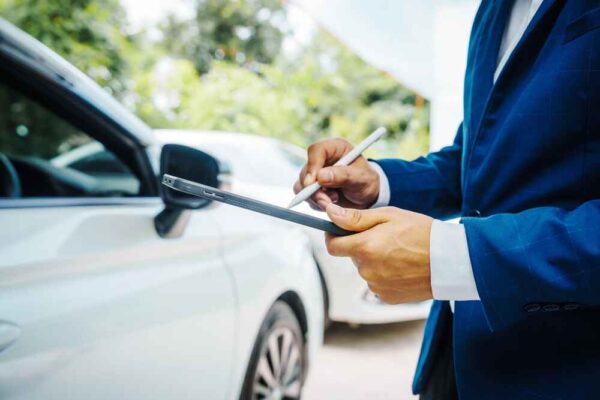
Sideswipe Collision: Who Is at Fault in Sideswipe Accidents?
Sideswipe car accidents can happen quickly and unexpectedly. One moment you’re driving alone in your lane, and suddenly, another vehicle comes too close, clipping your mirror or scratching the entire side of your car. Most people think sideswipe accidents are not as bad as head-on or rear-end collisions, but that’s not entirely true. Sideswipe accidents can be very serious and can cause severe injuries, car damage and even secondary accidents if traffic is heavy.
Since sideswipe accidents happen so fast, determining fault can be tough, especially when both drivers claim to be in their lane. Without clear footage, such as dashcam videos or nearby traffic cameras, the only way to determine who’s at fault would be to rely on physical evidence and witnesses’ statements.
In this article, we will discuss how fault determination works in sideswipe accidents, what insurance companies consider and the evidence that can help your case.
What Is a Sideswipe Collision?
A sideswipe collision is when two cars driving in the same direction scrape along each other while side by side. Or when two cars are driving in opposite directions and pass too close, and their sides hit.
This type of collision is very dangerous on highways because the vehicles are moving at high speeds, and there’s no time for the drivers to react or regain control. This can cause secondary crashes, rollovers or force vehicles into other lanes or off the road.
Although sideswipe collisions don’t seem as bad as head-on or rear-end crashes, they can still be very serious.
Some of the common injuries are:
- Traumatic Brain Injuries
- Neck Injuries
- Spinal Injuries
- Broken Bones
- Soft Tissue Injuries
What Is a Side-Swiped Car and How Does it Happen?
A side-swiped car is a vehicle that has been hit along its side by another vehicle during a lane change, merge, or when a driver attempts to move to another lane without checking their blind spots. It can happen anywhere, on highways, streets, or even in parking lots.
This type of contact can be minor and only barely scratch your car, but in most cases, it leads to noticeable damage. Most sideswipe accidents cause damage to car doors, side mirrors, and paintwork. If the impact is so strong, it can cause one or both drivers to lose control and drift onto other vehicles, barriers, or even off the road entirely, which leads to more damage.
What Are the Common Causes of Sideswipe Car Accidents?
Unsafe Lane Change
Unsafe lane change is one of the most common causes of side-swipe car accidents. It usually happens when the driver attempts to shift lanes or merge without signalling or checking their blind spots. When it comes to changing lanes, you should always be patient and cautious of your surroundings to avoid risking a collision with another vehicle.
Distracted Driving
Distracted driving is a traffic violation in many provinces in Canada, as it’s one of the leading reasons for car accidents, including sideswipe collisions. Distracted driving happens when the driver’s attention is taken away from the road, whether it’s a text message, a phone call, or even talking with passengers. Although these actions may seem minor, they are among the primary reasons for drifting off the lane or missing signals. Once you start driving, you should always keep your eyes on the road and your hands on the wheel so you don’t put your life and others’ at risk.
Reckless Driving
Reckless driving or unsafe lane changes cause a significant number of sideswipe collisions, especially on highways and busy roads. This includes actions like excessive speeding, lane changes without signalling, weaving through traffic, aggressive driving, and road rage. Staying calm and focused while driving is very important to avoid hurting yourself or others.
Driving Under the Influence
Impaired driving or drunk driving is considered a criminal offence in Canada and is a major cause of car accidents, including sideswipe collisions. When a driver is under the influence of alcohol or drugs, their reaction time and focus are affected, which increases the risk of drifting between lanes and side-swiping another car. Moreover, if you’re arrested in Canada multiple times for DUI, you can face severe penalties, including licence suspension, vehicle impoundment, hefty fines, and even prison time.
Inclement Weather
Driving in severe weather conditions is extremely dangerous, and it requires extra precautions. Adverse weather conditions like rain and snow cause the roads to be slippery while also reducing your visibility. These factors make it harder for drivers to control their vehicles and increase the chances of ending up with a side-swiped car. If it’s an emergency and you need to drive in such conditions, slow down, use your headlights, and if you need to change lanes, signal first.
Who Is at Fault During a Side Swipe?
Most sideswipe accidents occur because a driver attempts to change lanes without checking their blind spot or failing to signal, and usually, this person is the at-fault driver. However, insurance companies mostly refer to the Fault Determination Rules under the Insurance Act to decide who is responsible for the accident.
According to Regulation 668, Section 10 (Rules for Automobiles Travelling in the Same Direction in Adjacent Lane), if one vehicle is in its lane and another attempts to change lanes and a collision occurs, the vehicle that was changing lanes is considered 100% at fault. Meanwhile, if both vehicles involved are on or over the center line and neither of them changes lanes, each driver is deemed 50% at fault. This 50% rule also applies if the vehicles’ exact locations can’t be determined.
Sideswipe collision can happen whether the vehicles are travelling in the same or opposite directions. In any of these cases, determining liability relies on the movement of each vehicle and the evidence available. If your car was sideswiped while you were in your lane, you must gather all the details and evidence you can, including dashcam footage, photos, and witness statements, to support your claim.
Are Sideswipe Collisions the Most Damaging Type of Collision?
Sideswipe collisions aren’t the most damaging type of collision, but they can lead to very serious consequences. Besides the damage caused, sideswipes often result in car accident injuries that may not show immediately and worsen over time, such as soft tissue injuries and whiplash.
In many cases, the side-swiped car would drift into the oncoming traffic and cause secondary crashes, severe injuries, and even property damage. Although sideswipe collisions may appear minor at first, they should never be underestimated because their impact can escalate quickly, especially in heavy traffic.
What Are the Main Types of Sideswipe Crashes?
Sideswipe Collision in the Same Direction
Same-direction sideswipe happens when two vehicles travelling side by side make contact. This usually happens when a driver attempts to change lanes without carefully checking their surrounding and signalling. It can also happen during merging or when one driver loses control and drifts out of their lane. In these situations, the driver who changes lanes is at fault.
Sideswipe Collision in Opposite Directions
Opposite-direction sideswipe accidents aren’t as common as same-direction sideswipes, but they can be more dangerous. This type of collision happens when two vehicles travelling in opposite directions make contact. It usually occurs on narrow roads or during severe weather conditions, and it increases the risk of losing control, disturbing the oncoming traffic, or even triggering a head-on collision. A slight drift over the center line may seem like nothing to you, but in reality, it can result in serious injuries and damages.
Once you get behind the wheel, you must stay focused and follow all the rules for your own and others’ safety.
Can Sideswipe Collisions Cause Bodily Harm?
Sideswipe collisions can cause very serious injuries, and according to many accident victims, the impact can be both physically and emotionally traumatic.
The most common side-swipe collision injuries are:
Whiplash
Whiplash is very painful because it’s one of the neck injuries that can affect muscles, ligaments, and tendons in the cervical spine. It occurs when a strong force causes the head to snap forward and then backward, which strains the neck’s soft tissues.
Back and Neck Injuries
Back and neck injuries are also common with sideswipe collisions, and these injuries are even more severe than whiplash. If the crush is so strong, drivers and passengers can suffer from herniated discs, spinal misalignment, or even nerve damage.
Broken Bones
Sideswipe collisions can result in broken bones, especially if the crash is too strong and it pushes the driver or the passengers against the door or windows. Arms, ribs, and legs are vulnerable in these types of crashes, and sometimes, the fracture might be minor, so that you won’t even notice it until you get an X-ray. Even if you don’t think you’ve suffered a serious injury, seeking medical attention is so important following an accident.
Traumatic Brain Injuries
Brain injuries can happen if the driver of the side-swiped car hits their head against the window or the steering wheel. Even without direct contact, the sudden movement of the head can cause the brain to move inside the skull, leading to a concussion at best. In more severe cases, the accident can cause internal bleeding, swelling, or permanent brain damage.
Soft Tissue Injuries
Many people consider soft tissue injuries to be minor, but they can cause unbearable pain and worsen over time if not treated properly. Sprains, strains, and bruises are common in sideswipe collisions due to the sudden jolting or twisting of the body. If you’re involved in a sideswipe collision and you suffer from a soft tissue injury, no matter how minor it seems at first, you should seek medical attention immediately.
What Should I Do if Someone Sideswipes My Car?
Here’s what you should do if another vehicle sideswipes your car:
- Be Safe: Move your car to a safe location off the road and check for injuries. If you or any of your passengers are severely injured, call 9-1-1 and don’t move until help arrives.
- Document the Accident: Take clear photos and videos of the accident scene, car damage, license plates, and road conditions. Get statements from witnesses and don’t forget to get their contact info.
- Report the Accident to the Police: Call the police and make sure to give them all the information you gathered. A police report will help your insurance claim, especially if you’re filing for damages, medical bills or if there’s a dispute about who was at fault.
- Contact Your Insurance Company: File a claim by calling your insurance company and submitting all the info and documents you gathered, along with the police report.
- See a Doctor: Even if you feel fine after the accident, see a doctor and get an X-ray because sometimes you might have minor fractures or injuries that won’t show up immediately.
- Talk to a Lawyer: Consider talking to a car accident lawyer for advice on your situation, especially if it’s a dispute about who was at fault.
- Stay in Touch with Your Insurance: Monitor your claim and keep in touch with your insurance rep. Sometimes your insurance company will ask for more info or documents, so make sure to give them to them asap to speed up the process.
Will a Sideswipe Collision Affect My Insurance Rates?
If a sideswipe car accident occurs and you’re found to be the at-fault driver, then yes, your insurance rates will most likely go up. Generally, any at-fault accident will raise your rates unless you have an accident waiver endorsement. This endorsement protects your auto insurance premiums from increasing after your first at-fault accident. Contact a reliable insurance broker in Ontario to learn more about the accident waiver endorsement and other types of add-ons.
What Is an Example of a Sideswipe Accident?
Some real-life scenarios of sideswipe car accidents include:
Changing Lanes on a Highway
A driver attempts to change lanes on a highway but doesn’t check their blind spot or turn on their signals, causing them to accidentally sideswipe another car. The sideswiped car needs painting and repairs to the doors and side mirror. In this case, the driver who changed lanes is most likely responsible for the accident because they failed to merge into the lane correctly.
Road Rage
It’s peak hour, and the traffic is heavy, but someone wants to get out of traffic no matter what. They try weaving between lanes aggressively and end up sideswiping another car, causing damage and injuring the driver of the sideswiped car. This collision also causes secondary crashes in the congested traffic.
Merging onto a Busy Road
A driver is rushing to merge from an on-ramp, but they don’t adjust their speed or even check for space. They slide into the next lane too quickly and accidentally sideswipe a car that’s travelling beside them. The side of the sideswiped vehicle is scratched and dented, and the mirror is broken.
Opposite-Direction Sideswipe
Two vehicles are travelling in opposite directions on a narrow road, and they are not slowing down, which causes their sides to make contact. Both cars get scratched, and they can’t determine whose fault it was. In this case, if neither of the cars changed lanes, then each driver is deemed 50% at fault.
How Can Auto Insurance Help After a Sideswipe Collision?
Collision coverage is an optional type of insurance in Ontario, but it’s important because it helps you recover from collisions, especially if the damage to your car is severe or if you suffer injuries as a result of the crash. Here’s how it can help:
- Damage Repairs: If you have collision insurance, your insurer will pay for repairing the damage caused by the sideswipe accident.
- Liability Coverage: If you’re found at fault, your insurance provider will pay for the other person’s damages and injuries.
- Medical Expenses: Accident benefits coverage helps cover medical treatment and rehabilitation. If the injury requires you to take days off work, this insurance coverage will also help cover lost income.
- Uninsured Motorist Coverage: If the at-fault driver is uninsured, underinsured, or unidentified, the uninsured motorist coverage will help you cover the costs.
- Legal Assistance: If the collision causes legal disputes, insurance will help you pay the legal expenses associated with the claim. However, not all policies cover the legal part, so you should check with your insurer if your policy covers it.
How to Avoid Sideswipe Collisions
- Stay Focused: Once you get in the car, your attention should be on the road. Don’t get busy with anything, even for a second.
- Be Careful When Merging: When merging, check your blind spots, use your signals and make sure there’s enough space for your car.
- Never Drive Drunk: Driving under the influence of alcohol or drugs slows down your reaction time and decision-making, which increases the chances of accidents. Plus, DUI is a crime and can lead to license suspension, vehicle impoundment and jail time.
- Use Your Mirrors: Use your mirrors to check your blind spots and be aware of your surroundings.
- Watch the Road: Don’t drive in the rain, snow or fog. If you have to drive in those conditions, slow down and stay in your lane.
- Give Space: Always make room for other cars and have a safe distance between you and other cars on the road.
Sideswipe Collision – FAQs
What does it mean when someone sideswipes you?
If your car is sideswiped, it means that another vehicle scraped along the side of your vehicle while travelling in the same or the opposite direction. Sideswipe collisions can cause damage to the side of your car and injuries to the sideswiped driver, depending on how strong the impact is.
Who is to blame for a sideswipe car accident?
According to the Ontario Fault Determination Rules, if one vehicle is properly on its lane and another car sideswipes it while changing lanes, the driver making the lane change is mostly at fault.
How do insurance companies determine fault when handling sideswipe collision claims?
Each insurance provider has its way of determining fault. However, the key to determining liability is identifying the driver who changed lanes. To do so, they refer to the evidence you collected from the accident scene, including dashcam footage, photos, and videos from nearby traffic cameras.
What are the most common causes of sideswipe car accidents?
The most common causes of sideswipe car accidents are:
- Distracted Driving
- Road Rage
- Reckless Driving
- Driving Under the Influence of Alcohol or Drugs
- Severe Weather Conditions
What should I do after a sideswipe collision?
- Move to a safe place and check for injuries.
- Call emergency services.
- Document the accident by taking photos, finding dashcam footage if available, and asking witnesses for their statements.
- Report the police because you’ll need to submit this report to your insurance company.
- Notify your insurance company of the accident and submit all the documentation you gathered, along with the police report.
- Seek medical attention even if you think your injury is minor. Some injuries won’t hurt immediately, and they can evolve over time.
You Might Want to Read
June 15, 2025
Sideswipe Collision: Who Is at Fault in Sideswipe Accidents?
June 15, 2025
Least Depreciating Cars in Canada
June 5, 2025
Welcome to the Team Keyes Insurance


